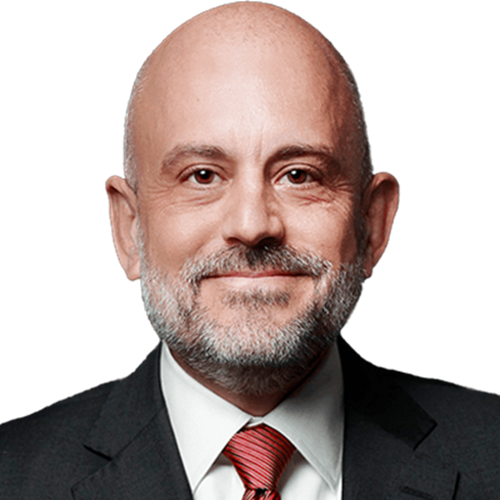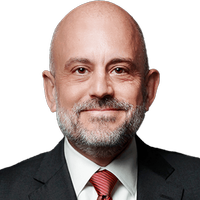How to Help Your Family Wealth Last for Generations
Creating generational wealth takes careful planning and thoughtful sharing of intentions, plus the right investment vehicle.

The Chinese proverb “rags to rags in three generations” says that family wealth does not last for three generations. The first generation makes the money, the second spends it and the third sees none of the wealth.
The Chinese aren’t the only ones who acknowledge this as a problem. In the U.S. it is referenced as “shirtsleeves to shirtsleeves in three generations,” and in Japan it’s “rice paddies to rice paddies in three generations.”
These sayings contradict what I hear clients tell me they want their money doing for them after death. After nearly three decades of assisting families with estate planning, what I have found is that the majority have a deep desire to leave a legacy for their family. The idea of leaving a thumbprint on future generations seems to give meaning to what people spend a lifetime accumulating.
From just $107.88 $24.99 for Kiplinger Personal Finance
Become a smarter, better informed investor. Subscribe from just $107.88 $24.99, plus get up to 4 Special Issues

Sign up for Kiplinger’s Free Newsletters
Profit and prosper with the best of expert advice on investing, taxes, retirement, personal finance and more - straight to your e-mail.
Profit and prosper with the best of expert advice - straight to your e-mail.
So the question is, if people have an inherent desire to leave a legacy for their families, why is there such a high failure rate among generational wealth? I believe the answer lies in how estate planning is defined and how it is approached.
A common definition goes like this: Estate planning is the process of designating who will receive your assets and handle your responsibilities after your death or incapacitation. The very definition of estate planning omits any mention of generational intent. That’s a problem. Once the first generation passes away, the estate plan has essentially fulfilled its purpose once the second generation has access to the estate.
The idea for generational wealth is not new. Two of the most referenced figures related to generational wealth are Cornelius Vanderbilt — whose famous last words to his family were, ''Keep the money together” — and John D. Rockefeller. The Vanderbilt’s didn’t follow their patriarch’s advice, and the family fortune dwindled away, but the Rockefellers heeded the advice and are now in their seventh generation of wealth with billions in assets. There is more to the story that you can listen to here.
The Making of a Generational Plan
Leaving a legacy necessitates a written strategy designed to equip future generations with the information they need to carry out the plans set before them. This written strategy is in addition to traditional estate planning documents. The legal documents are needed to hold the assets, but a written generational plan is what actually keeps the money together.
There are three foundational components needed for you to begin a conversation with your professional team of advisers to create and implement a generational plan. Once you have these worked out, you can begin to build the framework for what could be one of the most meaningful things you ever do for your family.
First: You Need the Right Mindset
When you are thinking about your legacy, it’s helpful for you to “blur the faces” of your heirs. The reason for this is that your goal is to reach as far into the future as possible to include generations you will never meet. At this stage of planning you’re thinking big picture about your legacy, and this is difficult if you have your kids and grandkids front of mind.
It doesn’t mean you can’t have as part of your estate plan specific gifts to living family members, but that is a separate part of this process.
Second: You Need to Be Open with Your Family
You need to be open with your family about your assets and your intentions. In general, people tend to live as if their money, their beliefs, their values and their wishes are a secret and miss the opportunity to communicate knowledge and wisdom to their children or grandchildren.
To have a generational plan, you cannot have a mindset that assumes everyone in the family knows what you know and that they will learn what to do through osmosis. Your children may have a good education or a successful career, but that does not mean they understand financial or generational planning.
It is the giver’s responsibility to offer guidance and leadership to the family for them to know what to do when you pass away.
I have had clients in my office in tears many times over the fact their parents will not communicate anything with them. In some cases, no guidance is being offered for managing the inheritance coming, and the heirs have to wait until their parents’ death to learn what is going on.
There could be a number of reasons for this situation. Some holders of wealth either don’t care what happens after they pass away or simply do not want to deal with having the conversation. If this is you, then the idea of generational planning may not be for you, and that is OK. It’s your money, and you can do with it what you wish.
But for those who do have generational aspirations, this is an opportunity for you to bring your family together to cast a vision for the wealth you have and outline your vision of a family legacy. This can spark meaningful discussions about what your family stands for, what values you share, what wealth strategies are in place, and outline what to expect as one generation dies and a new one is born.
This has the potential to pave the way for each family member to understand his or her role and responsibility to perpetuate the legacy.
Third: You Need to Put Your Intentions in Writing
Legal documents can be a guide for administering the plan, but the truth is that the heirs of the estate will be the ones instituting the plan after your gone. So it is critical not only that they know and understand your intentions, but that they are put down in writing so that they are transferrable to future generations.
To maintain generational wealth, the goal should be to set specific provisions for how money is to be used, placing restrictions on how money is accessed and how money is to be replenished.
For instance, many of my clients are not interested in helping their kids get out of debt or drive fancy cars. What they really want is to see their family investing in themselves (i.e., a higher education, business startup or expansion and charitable donations that support the family values) while growing the assets in the plan.
Most successful people will tell you that experiencing what it took to create the wealth is also what helps them keep and grow the wealth. What it takes to create wealth is not transferrable to those who have never created wealth for themselves. So, the idea is to offer your heirs the means to be able to get a higher education, to earn more money or to start a business to generate wealth for themselves and experience what it takes to not only create the wealth but to keep it.
Put your plan down in writing, possibly as part of a family constitution or set of bylaws that can be passed down. Each generation has a fiduciary responsibility to carry forward the intentions of the previous generation with the sole purpose to leave the estate better off than it was when they received it for the benefit of the next generation.
How to Keep Your Estate’s Assets Growing for Generations
When you think of money and growing wealth, the tendency is to assume that investments are the primary driver behind the strategy. However, when it comes to a generational plan, a specially designed whole life insurance policy, I believe, is the primary catalyst for growing and protecting the assets while also providing access to cash.
The reason these contract designs are so effective within generational planning is due to their risk-mitigation characteristics. The inherent features of these contracts (if designed properly) guarantee the results and have everything needed to give a generational plan predictable results one generation at a time:
Guaranteed Death Benefit. A life insurance death benefit is guaranteed to pay a large tax-free lump sum at the insured’s death without the need for taking on market risk. This death benefit has a multiplying effect, because it is purchased using discounted dollars (the total death benefit is greater than the total premiums paid). Once a policy owner passes away within one generation, the death benefit proceeds can be used to purchase new life insurance policies on select people in the next generation; thus creating new wealth for the next generation.
Guaranteed Access to Cash. Through the special design of a whole life policy, the high early cash values offer access to cash through policy loans. This loan privilege allows the beneficiaries of the generational plan to have access to cash while the cash values of the contract continue to grow uninterrupted. Policy loans allow a private banking system to form within the generational plan and allow for unique repayment capabilities, because the insurance company does not require payment on loans until the death of the insured. By keeping money continuously flowing into these policies, new death benefits are established that create new future wealth while simultaneously driving cash values higher, allowing more access to cash.
Guaranteed Cash Values. There are two parts that make up the cash accumulation within these policy designs: the guaranteed cash and dividends. Benefits and guarantees are backed by the claims-paying ability of the insurance company, and dividends are the result of low mortality along with profit sharing of the performance from the insurance companies underlining assets. The total cash value accumulates at a consistent and predictable growth rate that is tax-free and without market risk or volatility concerns. This allows for easy cash flow planning due to having consistent and predictable growth.
Of course, life insurance is not a unicorn and could potentially have unintended consequences if the contracts were mismanaged. For instance,
- Income and growth on accumulated cash values are generally taxable upon withdrawal.
- Adverse tax consequences may result if withdrawals exceed premiums paid into the policy.
- Withdrawals or surrenders made during a surrender charge period may be subject to surrender charges and may reduce the ultimate death benefit and cash value.
- Surrender charges vary by product, issue age, sex, underwriting class and policy year.
- A MEC or Modified Endowment classification can trigger adverse tax consequences by violating IRS funding rules.
- Policy loans and withdrawals will reduce available cash values and death benefits and may cause the policy to lapse, or affect guarantees against lapse.
- Additional premium payments may be required to keep the policy in force.
- In the event of a lapse, outstanding policy loans in excess of unrecovered cost basis will be subject to ordinary income tax.
The Bottom Line on Generational Wealth
To wrap up, the success or failure of a generational plan rests on three things:
- Articulating your vision for the future and getting buy-in from your family for the vision.
- Communicating your vision through a written document that details your vision and equips future generations to carry the plan forward.
- Having proper legal work and life insurance designs in place as the catalyst for bringing your vision to fruition. Finding competent professionals who have a full understanding of generational strategies will be important.
For more information, visit BUILDBanking.com and brianskrobonja.com.
Securities offered through Kalos Capital Inc., Member FINRA/SIPC/MSRB and investment advisory services offered through Kalos Management Inc., an SEC registered Investment Adviser, both located at11525 Park Wood Circle, Alpharetta, GA 30005. Kalos Capital and Kalos Management do not provide tax or legal advice. Skrobonja Financial Group LLC and Skrobonja Insurance Services LLC are not an affiliate or subsidiary of Kalos Capital or Kalos Management.
Results may vary. Any descriptions involving life insurance policies and their use as an alternative form of financing or risk management techniques are provided for illustration purposes only, will not apply in all situations, may not be fully indicative of any present or future investments, and may be changed at the discretion of the insurance carrier, General Partner and/or Manager and are not intended to reflect guarantees on securities performance. The terms BUILD Banking™, private banking alternatives or specially designed life insurance contracts (SDLIC) are not meant to insinuate that the issuer is creating a real bank for its clients or communicating that life insurance companies are the same as traditional banking institutions. This material is educational in nature and should not be deemed as a solicitation of any specific product or service. BUILD Banking™ is offered by Skrobonja Insurance Services only and is not offered by Kalos Capital nor Kalos Management.
Skrobonja Insurance Services LLC does not provide tax or legal advice. The opinions and views expressed here are for informational purposes only. Please consult with your tax and/or legal adviser for such guidance.
Tax laws are subject to change and you should consult a tax professional. Policy loans are not usually subject to income tax unless the policy is classified as a modified endowment contract (MEC) under IRC Section 7702A. However, withdrawals or partial surrenders from a non-MEC policy are subject to income tax to the extent that the amount distributed exceeds the owner’s cost basis in the policy. Loans, withdrawals or partial surrenders from an MEC policy are subject to income tax to the extent of any gains in the policy, and if the payment occurs prior to age 59½, a 10% federal additional tax may apply.
A policy change may incur fees and costs, and may also require a medical examination.
Securities offered only by duly registered individuals through Madison Avenue Securities, LLC. (MAS), Member FINRA & SIPC. Advisory services offered only by duly registered individuals through AE Wealth Management (“AEWM”), a registered investment adviser. Skrobonja Financial Group, LLC, Skrobonja Insurance Services, LLC, AEWM and MAS are not affiliated entities. The article and opinions in this publication are for general information only and are not intended to provide specific advice or recommendations for any individual. We suggest that you consult your accountant, tax or legal adviser with regard to your individual situation.
Profit and prosper with the best of Kiplinger's advice on investing, taxes, retirement, personal finance and much more. Delivered daily. Enter your email in the box and click Sign Me Up.

Brian Skrobonja is a Chartered Financial Consultant (ChFC®) and Certified Private Wealth Advisor (CPWA®), as well as an author, blogger, podcaster and speaker. He is the founder and president of a St. Louis, Mo.-based wealth management firm. His goal is to help his audience discover the root of their beliefs about money and challenge them to think differently to reach their goals. Brian is the author of three books, and his Common Sense podcast was named one of the Top 10 podcasts by Forbes. In 2017, 2019, 2020, 2021 and 2022, Brian was awarded Best Wealth Manager. In 2021, he received Best in Business and the Future 50 in 2018 from St. Louis Small Business.
